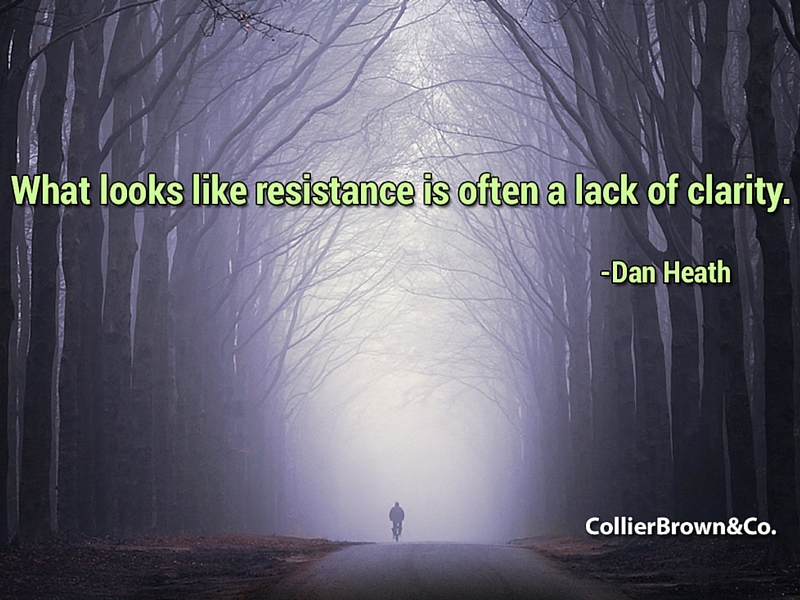“Leadership involves leading.” I read that somewhere and it’s true enough, but leadership also involves implementing change. Sometimes (often?) change has a way of generating resistance in people.
The best way to avoid resistance to change is to stop it before it starts. Really. You may not be able to eliminate all resistance, but what if you could intentionally help change initiatives go easier and smoother (read: more successfully)?
Before I share some key questions to consider in advance of implementing “something new and improved” let’s consider a different possibility: what looks like resistance could be a lack of clarity.
That’s right, clarity. Whatever change is proposed needs to be clear – to be understood – by your audience. Otherwise, people drift toward being afraid (of the unknown, surprises, losing control, losing their job, or losing some other quality of security) or react in mistrust (because of too many previous unassimilated changes, a new manager who hasn’t had time to build trust yet, or a myriad of other reasons). Fear and mistrust can manifest and metastasize in a broad spectrum of resistance: from benign passive/aggressive language on the proposed change to fully-aggressive rejection, or even hostility.
If we truly want to accelerate change, we need to help people understand – specifically, behaviorally – how to reach the new goals/ideals we’ve set before them.
Author, speaker, and consultant Dan Heath illuminates the issue this way, “We tend to assume that kids (and adults) know how to achieve success. If they don’t get there, it’s for lack of effort — or talent. Sometimes that’s true. But a lot of the time, people are just flying blind. John List, an economist at the University of Chicago, has noticed the disconnect in his own education experiments. He explains the problem to me this way: ‘I could ask you to solve a third-order linear partial differential equation,’ he says. ‘A what?’ I ask. ‘A third-order linear partial differential equation,’ he says. ‘I could offer you a million dollars to solve it. And you can’t do it.’ (He’s right. I can’t.)”
These will help. Here are four key, foundational questions to consider before implementing a change (you can adjust your strategy accordingly):
- What does this specific change include?
- Who will feel the impact of this change?
- How will the change impact them?
- How might they react (consider the very real possibility of fear, mistrust and other misgivings)?
Could it be for some, that embracing the new changes you have in mind is like solving a third-order linear partial differential equation?
In Other Words…
“Any fool can know. The point is to understand.” ― Albert Einstein
“Taking a new step, uttering a new word, is what people fear most.” ― Fyodor Dostoyevsky, Crime and Punishment
“Just because you don’t understand it doesn’t mean it isn’t so.” ― Lemony Snicket, The Blank Book
“Try to understand men. If you understand each other you will be kind to each other. Knowing a man well never leads to hate and almost always leads to love.” ― John Steinbeck
In The Word…
“Blessed are those who find wisdom, those who gain understanding,” ― Proverbs 3:13






